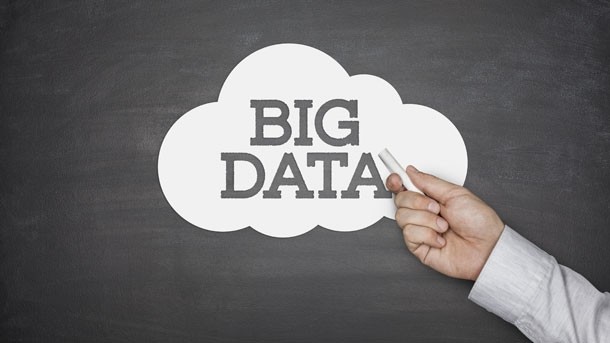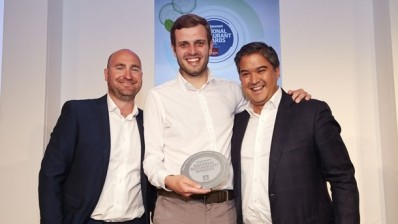Back-of-house technology: The rise of big data

Speaking at the Digital Innovation Forum hosted by BigHospitality’s sister-publication Restaurant Magazine last month, OpenTable’s Adrian Valeriano said that new technologies enabling operators to gather information on their customers could revolutionise the way we ‘do’ hospitality.
By adopting ‘data science’, he said, businesses can provide a truly personalised guest experience, learn from customer reviews and benchmark their performance.
Valeriano is not the first to identify the potentially transformative powers of the so-called ‘big data’ revolution – which has swept across the retail sector and is starting to shape the business models of forward thinking hospitality businesses.
But what exactly is big data? And how can operators collect and use it efficiently?
Barry Smith, senior consultant at Ikano Insight, points out that businesses have always collected information on their customers. However, technological advances have transformed the amount of data that can be collected and stored, the speed at which it can be processed and analysed, and the types of data that can be accessed.
“When people talk about big data they talk about the three Vs – volume, velocity and variety,” he explains.
He adds that by making analysis of customer data easier, emerging technology has also added a fourth V – value.
“Every step of the customer journey is an opportunity to collect and capture data. But you need to think about how that data is adding value to your business,” he says. “There is no point collecting the data if you can’t do anything with it.”
The customer journey
Clive Consterdine, sales and marketing director at Zonal, says there is now technology which allows hospitality businesses to capture big data and use it to improve experiences at every point of the customer journey.
“For restaurants, that process may begin with a customer sitting at home thinking about where they might like to eat, and perhaps checking out a website or online menu,” he explains. “So the first step for us is ensuring that the content on an online menu is driven by EPOS data, so it shows what is actually available.”
From the moment the customer makes a booking, technology can be used to collect information about every stage of their experience – from how long it takes them to be seated to exactly what they order, how long their food takes to arrive and how they settle the bill.
“All the way thought that journey the technology is collecting, tracking, monitoring what people ordered, what they thought of it and the precise timings,” explains Consterdine.
“If you have all of that complicated data you are able to assess how you are doing in the whole chain of events.”
The data collected can also help businesses offer what is known as ‘integrated service management’ – linking up all the dots to provide a seamless customer experience.
Table management systems, for example, can recognise guests from their booking details and flag up whether or not they have preferences, such as always wanting to sit next to a window or have a glass of Prosecco on their table when they arrive.
“Those sort of things can be retained within the system and be visible to the person who is greeting them when they arrive at the venue,” Consterdine says.
In the same way, sophisticated EPOS systems can be linked to loyalty – recognising members who are responding to an offer and automatically applying a discount to their bill.
“These sorts of things can now be done seamlessly. It means the staff on site don’t really need to do anything because the system will do it for them automatically,”
Once a customer leaves the venue, technology can be used to track customer feedback – be it through social media monitoring or collecting direct responses.
Business intelligence
Adrian Burns, managing director of Verteda, says business intelligence software can also help hospitality businesses track the behaviour of guests outside of their outlets.
“One of the things that restaurants and hotels definitely do not do enough of is utilising the power that is held within people’s card data,” he says. “There is an awful lot that hospitality businesses miss out on because they don’t know what their customer is doing outside of their outlet.”
He gives the example of someone staying at a hotel but finding the breakfast too expensive, so going over the road to have breakfast in a café, paying by card and returning to their hotel.
“If they were to use one of our systems we could tell them this card was used in your hotel, but it was also used 10 yards from your hotel at 8am in the morning for breakfast. They can then start to analyse that data and perhaps make the decision to reduce the cost of their breakfast to capture that business.”
Card data can also be used to find patterns among guests – such as identifying that a large number of customers visit an attraction nearby.
“By doing analytics on a card you may well see that in any given week, 100 of your customers go to Madame Tussauds. So you can speak to Madame Tussauds and do a deal with them, where you sell their tickets and get a commission,” says Burns.
Marketing
Big data can also be used to develop more sophisticated and personalised marketing and loyalty schemes.
“One thing the hospitality industry could to a lot better is understand not just the value but the engagement of their customers,” explains Smith. “Typically, when planning their marketing, hospitality companies will look at a group of people who spent the same in a year and give them all the same offer.
“Data marketing enables you to not just look at recency, frequency and value, but also loyalty and consistency of spend.”
A person who spent £1500 in one sitting but never returned, for example, may need an offer to encourage them to return to the business, while someone who spent the same amount spread out over multiple visits might require encouragement to spend more on each visit.
“It is all about building up pictures of your customers to determine what you want them to do next,” Smith explains.
Of course analysing data to this degree requires a certain level of expertise, but there are an increasing number of third party operators who can offer insight and marketing plans for businesses that can’t afford to hire their own analysts and marketing experts.
“Third party companies can put lots of links in place so whenever a customer touches your business, whatever that touch point is captured goes into the central marketing database,” says Smith.
Whether you use a third party service or decide to go it alone, Smith says the key to effective data marketing is developing a ‘single customer view’.
“You need to know it is the same customer that comes into a hotel, or makes a booking online,” he explains. “So when you contact that customer you only contact them once, and you speak to them in a consistent voice. It also allows you to understand the true value of that customer.”
The fourth V
With so much technology out there, big data can seem like a daunting proposition. However Smith says that operators shouldn’t be intimidated.
“Effectively everything you should be doing is just about taking little steps – put a database in place, start collecting the data, and then start analysing that data. You just need to look for patterns that are going to help you in your business,” he says.
Above all, operators should focus on the fourth V, and look at how the data they collect can add value to their business and their customers.
“Nothing has really changed, it is all just about understanding the customer and engaging with them on their terms,” says Smith. “The new technology has just made it easier to collect the data you need to build that understanding.”













